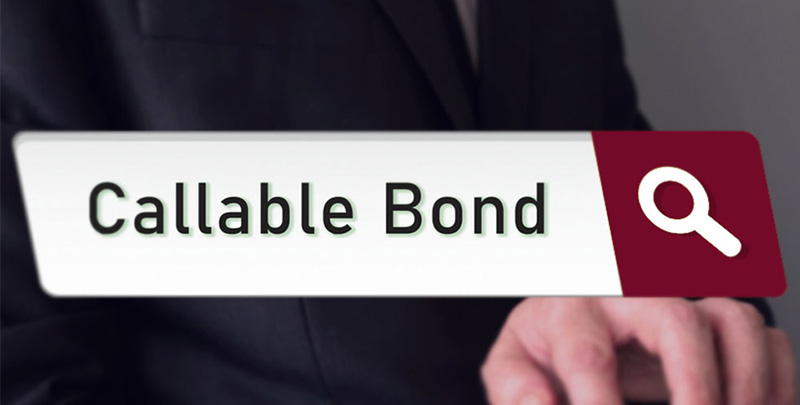Callable bonds stand out as unique instruments that offer issuers flexibility while presenting both opportunities and challenges for investors. These specialised debt securities have gained prominence in financial markets due to their distinctive redemption features and strategic advantages.
Understanding the callable bond meaning is essential for investors looking to diversify their portfolios with fixed-income securities. This article explores the intricacies of callable bonds, their valuation methods, various types, and practical examples to help you make informed investment decisions.
What is a callable bond?
The callable bond definition essentially describes a debt instrument that can be "called back" by the issuer under specific conditions outlined in the bond indenture. These conditions typically include the call date (when the bond becomes eligible for early redemption), the call price (the amount paid to bondholders upon redemption), and any call protection period (a timeframe during which the bond cannot be called).
Issuers incorporate call provisions to maintain flexibility in their debt management strategies, particularly to capitalise on falling interest rates. For investors, it translates to a security that typically offers higher yields compared to non-callable bonds as compensation for the potential early termination of the investment.
How do callable bonds work?
Callable bonds function similarly to standard bonds in many aspects. They pay regular coupon payments to investors and return the principal at maturity. However, the embedded call option creates a significant distinction in how these instruments operate in practice.
When an issuer decides to exercise the call option, it effectively terminates the bond contract before maturity by returning the principal to bondholders at the specified call price. This call price is typically set at a premium to the bond's face value to provide some compensation for the early termination. The call decision is usually triggered when market interest rates have declined substantially below the bond's coupon rate, allowing the issuer to refinance its debt at a lower cost.
From an investor's perspective, callable bonds are attractive due to their higher yields compared to non-callable bonds, compensating for the risk that the issuer might redeem the bond early, especially if interest rates decline.
Different types of callable bond
The callable bond market features several variations, each with distinct call structures:
- American callable bonds: These allow the issuer to call the bond at any time after the call protection period ends, offering maximum flexibility to issuers.
- European callable bonds: Unlike their American counterparts, these can only be called on a single specific date, providing more certainty to investors.
- Bermudan callable bonds: These represent a middle ground, allowing calls on a series of predetermined dates throughout the bond's life.
- Sinking fund callable bonds: These involve the gradual redemption of portions of the bond issue according to a predetermined schedule, rather than calling the entire issue at once.
Each type serves different needs in debt management strategies, varying slightly across these categories in terms of call timing and flexibility.
How is a callable bond valued?
Valuing a callable bond requires more complex calculations than standard bonds due to the embedded call option. The general valuation formula can be expressed as:
Callable bond value = Present value of coupon payments + Present value of principal payment - Present value of call option
Several factors influence callable bond valuation:
- Interest rate environment and volatility
- Time remaining until maturity
- Time until first call date
- Call price
- Coupon rate relative to market rates
Investors often analyse metrics like yield-to-call (return if the bond is called at the earliest possible date) alongside yield-to-maturity to assess potential outcomes. Generally, callable bonds trade at lower prices than comparable non-callable bonds, reflecting the value of the call option granted to the issuer.
Example of callable bond
Consider this practical example of a callable bond:
A bank issues a callable bond with the following characteristics:
- Face value: ₹1,000
- Coupon rate: 7% annually (paid semi-annually)
- Maturity: 10 years
- Call date: After 5 years
- Call price: ₹1,050
If interest rates fall to say 5% after five years, the bank would likely exercise the call option since the bank could refinance at a lower rate. You would receive ₹1,050 per bond (₹1,000 principal plus ₹50 premium) but would lose the remaining five years of 7% coupon payments. You would then need to reinvest in the new 5% interest rate environment. This shows the risk of earning less from future investments if your bond is called early.
Pros & cons of a callable bond
For investors:
Advantages:
- Higher yields compared to non-callable bonds
- Potential call premium upon early redemption
- Variety of structures to suit different investment needs
Disadvantages:
- Reinvestment risk if called during lower interest rate environments
- Price appreciation is limited or "capped" when interest rates fall
- More complex valuation and investment analysis required
For issuers:
Advantages:
- Flexibility to refinance debt when interest rates decline
- Ability to restructure debt portfolio as financial needs change
- Option to remove restrictive covenants by calling older bonds
Disadvantages:
- Higher coupon rates required to attract investors
- Call premium costs if bonds are redeemed early
- More complex issuance and management processes
Conclusion
Callable bonds represent a strategic financial instrument that balances the interests of issuers and investors in different ways. Understanding the callable bond meaning is crucial for investors to accurately assess risk and potential returns. While these bonds offer higher yields as compensation for call risk, investors must carefully evaluate factors like call protection periods, call prices, and the interest rate environment before making investment decisions.
Also Read: What are Inflation Indexed Bonds?
FAQs
Why do companies issue callable bonds?
Companies issue callable bonds primarily to maintain flexibility in their debt management strategies. This approach allows them to refinance their debt obligations when interest rates decline, potentially saving significant interest costs over time. Additionally, callable structures enable companies to restructure their balance sheets as financial needs evolve, remove restrictive covenants from older bonds, and optimise their capital structure without waiting for bonds to reach maturity.
What is the difference between a callable bond and a non-callable bond?
The fundamental difference between callable bonds and non-callable bonds lies in the redemption features. A callable bond includes an embedded option allowing the issuer to redeem it before maturity, while non-callable bonds must remain outstanding until maturity unless the issuer repurchases them in the open market.
Disclaimer: This article is for information purpose only. The views expressed in this article are personal and do not necessarily constitute the views of Axis Bank Ltd. and its employees. Axis Bank Ltd. and/or the author shall not be responsible for any direct / indirect loss or liability incurred by the reader for taking any financial decisions based on the contents and information. Please consult your financial advisor before making any financial decision.








